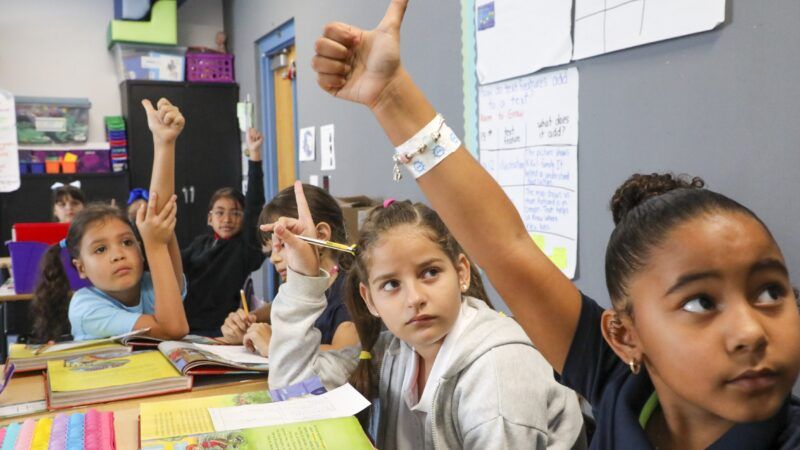Test Scores Are Rebounding After Pandemic School Closures, but Some Students Will Never Catch Up
A new study sparks hope that the historic declines in students' reading and math performance following the pandemic may not be permanent.

American students experienced historic losses in reading and math performance during COVID-19 school closures. Years after schools reopened, there is continuing evidence of lasting harm to student learning, with everything from ACT scores to school attendance showing continued slumps when compared to pre-pandemic years.
But a new study shows that students have regained some of the ground lost after the pandemic, sparking hope that depressed academic achievement may not be permanent.
Researchers at Harvard, Stanford, and Dartmouth looked at test scores of third- through eighth-graders from around 8,000 school districts in 30 states. They found that 35 percent of school districts lost more than half a year of instruction immediately after the pandemic, while just 27 percent saw either no change or improved results.
Unsurprisingly, learning losses were most extreme in low-income school districts. In many states, recovery in scores is driven primarily by improvements in higher-income school districts. However, there were some outliers—poor districts where scores made seemingly miraculous improvements and wealthy districts where scores continued to decline.
The researchers found that by 2023, students had regained about one-third of their losses in math and about one-quarter of their losses in reading. Of the 30 states studied, only one—Oregon—failed to improve upon its 2022 scores in 2023.
An analysis of the researchers' data published in The New York Times on Wednesday proposed that how schools spent federal relief dollars played a major role in which schools improved and which didn't. When the federal government poured $190 billion in a bid to help schools recover after closures, only 20 percent of the funds schools received were required to be used to address learning loss.
As a result, many school districts devoted the majority of their funds to cover expenses that have nothing to do with student learning—like building new athletic facilities, paying custodial workers, or even building a city-owned birding center. Unsurprisingly, the researchers found that schools that spent a higher portion of their funds on addressing learning loss rebounded better after the pandemic. When the Times interviewed educators at school districts with unusually high score recovery rates, school employees emphasized how their schools focused on spending federal aid money primarily on academics.
Unfortunately, the study also found that many students would likely never recover from the losses they experienced as a result of extended school closures—meaning that thousands of American schoolchildren are likely to enter adulthood with major academic gaps and could face permanently depressed earning potential.
"Few would be content to know that poor children paid a higher price for the pandemic than others—but that is exactly the path many states are on," wrote the researchers in a report of their findings. "Last year, students made up one-third of the pandemic loss in math and one-quarter of the loss in reading. Although good news, it also means that even if schools maintain the same pace this year, students, especially in lower-income districts, are unlikely to have returned to 2019 levels of achievement when the federal dollars are gone."



Show Comments (43)